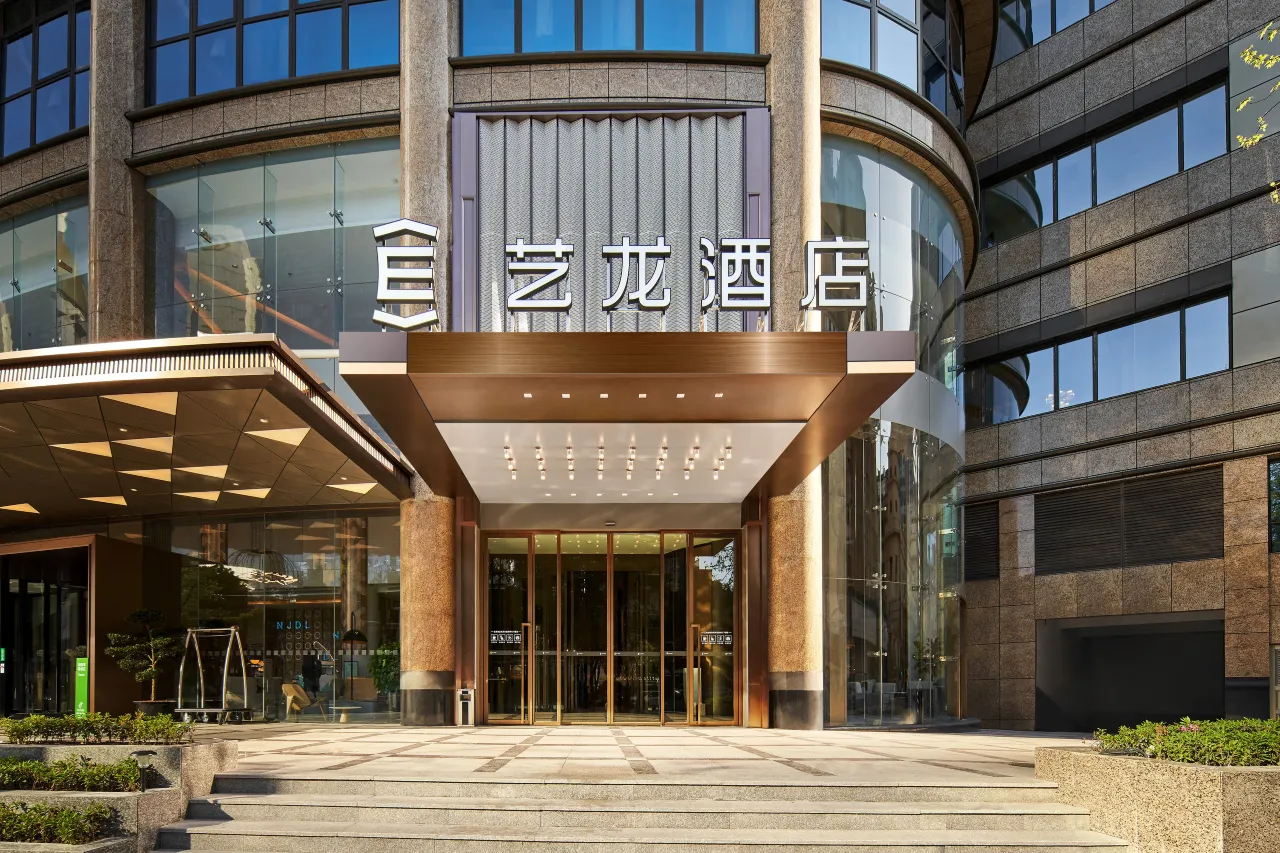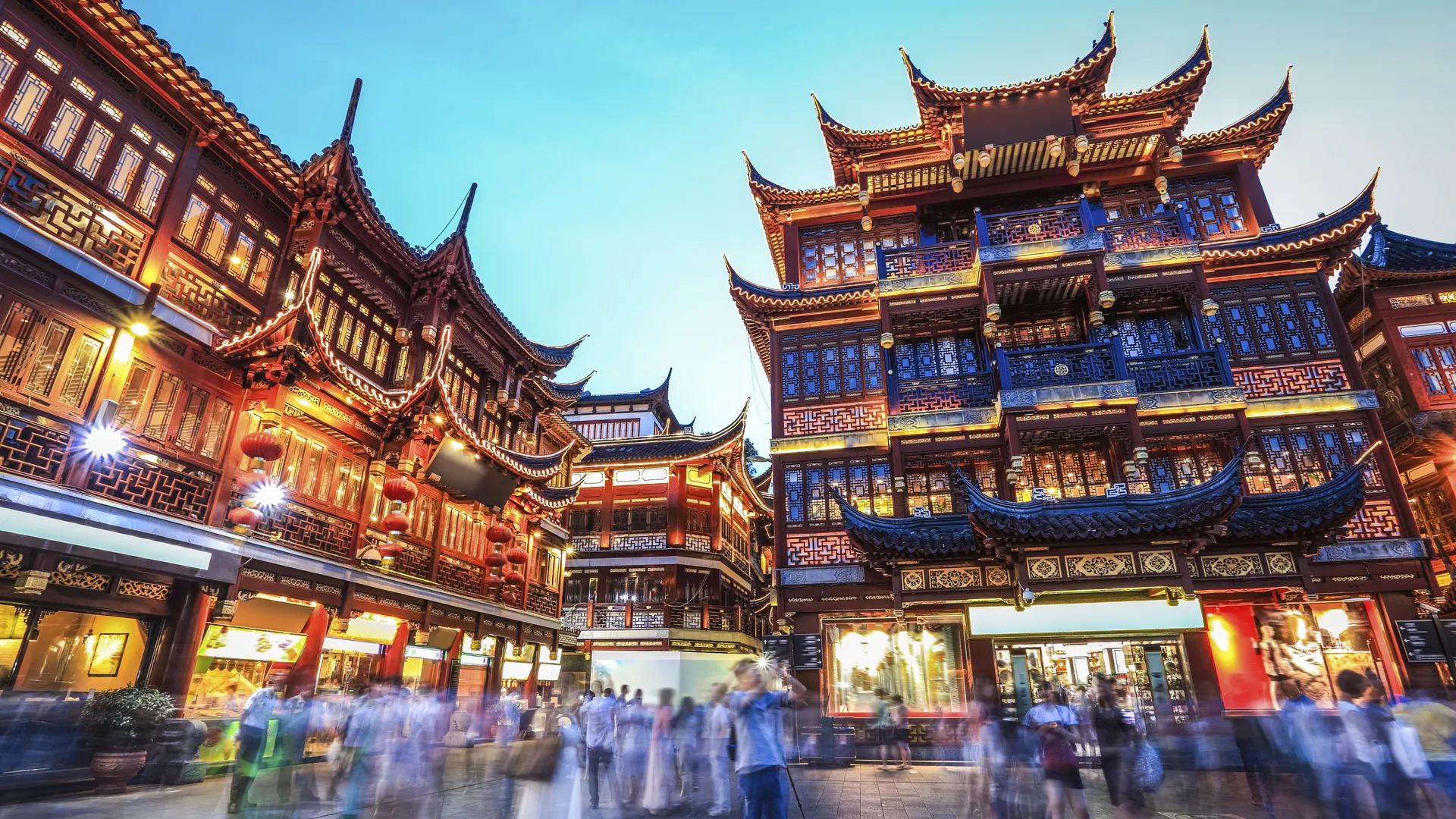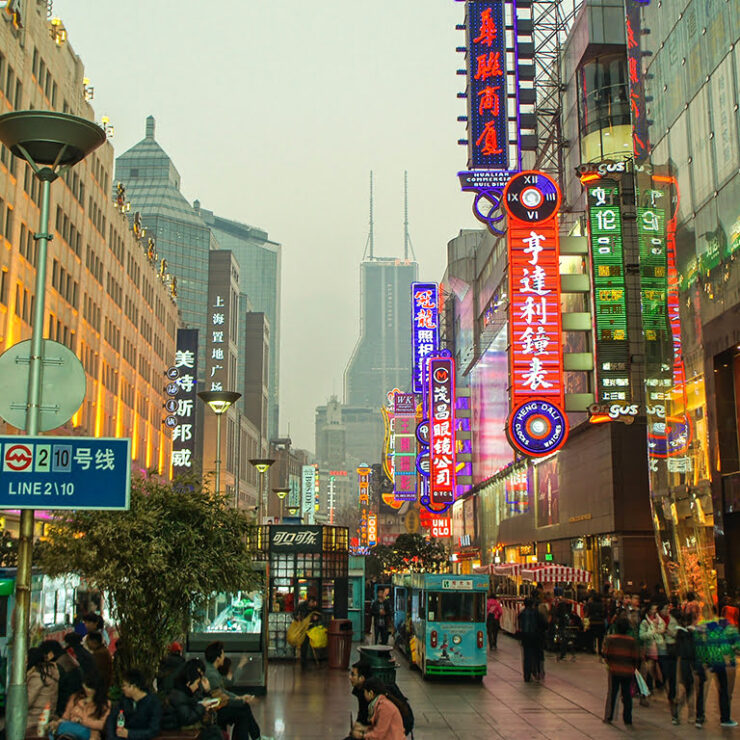Shanghái, a menudo conocida como la "París del Este", es una metrópolis deslumbrante donde Oriente se encuentra con Occidente, donde las tradiciones ancestrales se fusionan a la perfección con la innovación futurista. Como la ciudad más grande de China y un centro global de cultura, comercio e historia, Shanghái ofrece una increíble variedad de atracciones para todo tipo de viajero. Desde icónicos horizontes hasta serenos jardines, pasando por animados mercados y barrios históricos, hay algo para todos los gustos. Tras explorar esta vibrante ciudad a fondo, he preparado esta guía de viaje definitiva con las 10 atracciones imprescindibles de Shanghái. Ya sea que estés aquí un fin de semana o una semana, estos destinos te garantizarán experimentar lo mejor de Shanghái. ¡Vamos a sumergirnos!
¿Por qué Shanghái debería estar en tu lista de viajes?
Shanghái es una ciudad de contrastes: imponentes rascacielos proyectan su sombra sobre templos centenarios, y las tranquilas calles arboladas de la Concesión Francesa se encuentran a pocos minutos del bullicio de neón de Nanjing Road. Es un lugar que encarna la rápida modernización de China, a la vez que preserva su rico patrimonio cultural. Visitar las principales atracciones de Shanghái te ofrece un asiento en primera fila para presenciar esta dinámica interacción, ofreciendo una visión de su pasado como puerto comercial colonial y su presente como potencia mundial. Ya seas un aficionado a la historia, un amante de la gastronomía, un entusiasta de la arquitectura o simplemente un aventurero, los emblemáticos monumentos y experiencias de Shanghái te dejarán maravillado.
1. El Bund: el emblemático paseo marítimo de Shanghái
Ningún viaje a Shanghái está completo sin una visita al Bund, el monumento más famoso de la ciudad. Este paseo marítimo de una milla de longitud, junto al río Huangpu, ofrece impresionantes vistas tanto de los históricos edificios coloniales como del futurista horizonte de Pudong.
- Qué ver: En el lado oeste, admire los 26 edificios de la época colonial, incluyendo el Hotel Peace y el antiguo edificio HSBC, que exhiben estilos arquitectónicos como el art déco y el gótico. Al otro lado del río, contemple el horizonte de Pudong, con la Torre de la Perla Oriental y la Torre de Shanghái.
- Qué hacer: Pasee por el paseo marítimo al atardecer para tomar fotos impresionantes o tome un crucero por el río Huangpu (30-150 CNY) para contemplar de cerca ambas orillas. Por la noche, la zona se transforma con luces deslumbrantes.
- Por qué es una visita obligada: El Bund simboliza la historia de Shanghai como centro comercial internacional y sus ambiciones modernas, lo que lo convierte en la introducción perfecta a la ciudad.
- Cómo llegar: Tome las líneas 2 o 10 del metro hasta la estación East Nanjing Road y luego camine 10 minutos hasta Zhongshan East 1st Road. La entrada es gratuita.
- Consejo: Visítelo temprano por la mañana para evitar las multitudes, o bien entrada la noche para disfrutar de una experiencia más tranquila e iluminada. Lleve calzado cómodo para caminar por el paseo marítimo.
2. Torre Perla Oriental: un icono futurista en Pudong
Con 468 metros de altura, la Torre Perla Oriental es una de las estructuras más reconocibles de Shanghái y un símbolo de su transformación moderna. Ubicada en el distrito financiero de Lujiazui, en Pudong, ofrece vistas inigualables de la ciudad.
- Qué ver: Explore las plataformas de observación a 263 metros (Módulo Espacial) y 259 metros (Piso de Observación) para disfrutar de vistas panorámicas del Bund y más allá. El suelo de cristal transparente a 259 metros es una experiencia fascinante.
- Qué hacer: Visite el Museo de Historia de Shanghái en las plantas bajas para conocer el pasado de la ciudad a través de exposiciones interactivas. Cene en el restaurante giratorio para vivir una experiencia única.
- Por qué es una visita obligada: No es solo una torre: es una ventana a la ambición de Shanghai y una oportunidad de ver la ciudad desde arriba.
- Cómo llegar: Tome la línea 2 del metro hasta la estación Lujiazui (Salida 1) y camine 5 minutos hasta la Avenida Century 1. Los boletos cuestan desde 160 CNY para el acceso básico, con opciones combinadas de hasta 220 CNY.
- Consejo: Reserva tus entradas en línea para evitar las largas colas, especialmente los fines de semana. Visita el lugar en un día despejado para disfrutar de las mejores vistas y lleva una chaqueta, ya que en los niveles superiores puede hacer viento.
3. Jardín Yu y Bazar Yuyuan: Una muestra de la China clásica
Enclavado en el corazón del casco antiguo de Shanghái, el Jardín Yu (Yuyuan) es un jardín clásico chino de 400 años de antigüedad que data de la dinastía Ming. Rodeado por el animado Bazar Yuyuan, es un remanso de paz del bullicio urbano.
- Qué ver: Pasee por los intrincados pabellones, las rocallas, los estanques con carpas koi y los árboles centenarios del jardín. No se pierda la Exquisita Roca de Jade, una famosa piedra porosa.
- Qué hacer: Explora el bazar adyacente para comprar recuerdos, comida callejera como xiaolongbao (dumplings de sopa) y artesanía tradicional. Visita el cercano Templo del Dios de la Ciudad para sumergirte en la espiritualidad local (entrada: 10 CNY).
- Por qué es una visita obligada: El Jardín Yu ofrece una visión de la estética y la historia tradicionales de China, que contrasta marcadamente con la modernidad de Shanghai.
- Cómo llegar: Tome la línea 10 del metro hasta la estación del Jardín Yuyuan y camine de 5 a 10 minutos hasta la calle Anren 218. La entrada al jardín cuesta 40 CNY (30 CNY fuera de temporada).
- Consejo: Llegue temprano para disfrutar de la tranquilidad del jardín antes de que lleguen los grupos de turistas. Evite los días festivos nacionales como el Año Nuevo chino, cuando el bazar se llena.
4. Nanjing Road: la principal calle comercial de Shanghái
La calle Nanjing, con una extensión de 5,5 kilómetros, es una de las calles comerciales más concurridas del mundo y un vibrante escaparate del dinamismo comercial de Shanghái. Dividida en las secciones Este (peatonal) y Oeste (de lujo), es un paraíso tanto para compradores como para turistas.
- Qué ver: En Nanjing East Road, disfrute de los letreros de neón, los artistas callejeros y los grandes almacenes históricos como Wing On. En Nanjing West Road encontrará marcas de lujo y modernos centros comerciales como Plaza 66.
- Qué hacer: Compra de todo, desde souvenirs hasta moda de alta gama, o simplemente disfruta del ambiente. Visita lugares emblemáticos como Shen Dacheng para comer dulces tradicionales y refrescarte.
- Por qué es una visita obligada: La calle Nanjing captura el pulso de Shanghái: su mezcla de lo antiguo y lo nuevo, lo local y lo global, la convierte en una experiencia cultural que va más allá de las compras.
- Cómo llegar: Tome las líneas 2 o 10 del metro hasta la estación East Nanjing Road para la zona peatonal, o la estación People's Square para el extremo oeste. La entrada es gratuita.
- Consejo: Visítelo de noche para disfrutar al máximo de las luces y la energía. Tenga cuidado con los vendedores insistentes y las estafas; compre en tiendas de confianza.
5. Torre de Shanghái: el edificio más alto de China
Con 632 metros de altura, la Torre Shanghái, en el distrito de Lujiazui de Pudong, es el edificio más alto de China y el segundo del mundo. Su diseño retorcido de cristal es una maravilla de la arquitectura moderna, y su mirador ofrece vistas impresionantes.
- Qué ver: Diríjase a la plataforma de observación del piso 118 (a 546 metros) para disfrutar de vistas de 360 grados de Shanghái, a menudo por encima de las nubes. Las pantallas interactivas explican el diseño ecológico de la torre.
- Qué hacer: Disfruta de un café en la cafetería elevada mientras admiras el paisaje. Planifica tu visita al atardecer para ver la transición del día a la noche en la ciudad.
- Por qué es una visita obligada: Es un testimonio del espíritu vanguardista de Shanghai y ofrece el punto de observación más alto para apreciar la escala de la ciudad.
- Cómo llegar: Tome la línea 2 del metro hasta la estación de Lujiazui y camine 10 minutos hasta Yincheng Middle Road, 501. El precio de los billetes para adultos es de 180 CNY.
- Consejo: Compra tus entradas en línea para evitar largas esperas. Consulta el pronóstico del tiempo: la niebla o la lluvia pueden dificultar la vista desde esas alturas.
6. Concesión Francesa: Una mezcla de historia y modernidad
La Concesión Francesa, una antigua zona colonial de 1849 a 1943, es ahora uno de los barrios más de moda de Shanghái. Conocida por sus calles arboladas, su arquitectura europea y su ambiente bohemio, es perfecta para explorarla tranquilamente.
- Qué ver: Admire las villas históricas y las casas shikumen en calles como Huaihai Road y Fuxing Road. Visite Tianzifang, un laberinto de callejones artísticos con boutiques y cafés.
- Qué hacer: Relájese en el Parque Fuxing para ver a los lugareños practicar tai chi o tome un café en lugares elegantes como Seesaw. Explore las boutiques y descubra objetos únicos.
- Por qué es una visita obligada: La Concesión Francesa ofrece un lado más tranquilo e íntimo de Shanghai, combinando la historia colonial con la creatividad moderna.
- Cómo llegar: Tome las líneas 1 o 10 del metro hasta la estación South Shaanxi Road para acceder al centro. La entrada es gratuita.
- Consejo: Pasa una tarde paseando sin un itinerario estricto: parte del encanto reside en descubrir cafés o galerías escondidas. Vístete con estilo para integrarte con la gente moderna.
7. Ciudad acuática de Zhujiajiao: la Venecia de Shanghai
A solo una hora del centro de Shanghái, Zhujiajiao es una ciudad acuática de 1700 años de antigüedad, a menudo llamada la "Venecia de Shanghái". Con sus antiguos canales, puentes de piedra y arquitectura tradicional, es una pintoresca excursión de un día.
- Qué ver: Cruza el emblemático puente Fangsheng, explora edificios de las dinastías Ming y Qing y visita pequeños museos como el Museo Postal. Observa a los lugareños en su vida cotidiana junto al agua.
- Qué hacer: Tome un paseo en góndola (80-120 CNY para 6 personas) por los canales, compre artesanías y pruebe bocadillos locales como albóndigas de arroz glutinoso (zongzi).
- Por qué es una visita obligada: Zhujiajiao ofrece un contraste sereno con el caos urbano de Shanghai, mostrando las vías fluviales y la vida aldeana tradicionales de China.
- Cómo llegar: Tome la línea 17 del metro hasta la estación de Zhujiajiao o únase a una visita guiada desde el centro de Shanghái. La entrada a la ciudad es gratuita, pero algunas atracciones cobran entre 10 y 30 yuanes.
- Consejo: Visita entre semana para evitar las multitudes del fin de semana. Lleva protector solar o una sombrilla, ya que hay poca sombra junto a los canales.
8. Plaza del Pueblo y Museo de Shanghái: corazón cultural de la ciudad
La Plaza del Pueblo, antigua pista de carreras durante la época colonial, es ahora un extenso espacio público rodeado de monumentos culturales. En su centro se encuentra el Museo de Shanghái, una institución de renombre mundial dedicada al arte y la historia de China.
- Qué ver: En el museo, explore más de 120.000 artefactos, incluyendo bronces antiguos, cerámica, caligrafía y jade. En el exterior, disfrute de los jardines y fuentes de la plaza.
- Qué hacer: Pase de 2 a 3 horas en el museo (audioguías disponibles en inglés por 40 CNY). Relájese en la plaza o vea a los lugareños volar cometas y socializar.
- Por qué es una visita obligada: Se trata de una inmersión profunda en el patrimonio cultural de China, alojado en un sorprendente edificio que tiene la forma de un antiguo ding (recipiente para cocinar) de bronce.
- Cómo llegar: Tome las líneas 1, 2 u 8 del metro hasta la estación Plaza del Pueblo. La entrada al museo es gratuita, aunque las exposiciones especiales pueden tener un coste adicional.
- Consejo: Llegue a la hora de apertura del museo (9:00 a. m.) para evitar las multitudes. No se permiten bolsos grandes dentro; use las taquillas cercanas.
9. Templo Jing'an: serenidad espiritual entre rascacielos
Ubicado en el bullicioso distrito de Jing'an, el Templo Jing'an es un sitio budista de 1700 años de antigüedad, rodeado de modernos centros comerciales y rascacielos. Reconstruido tras un incendio en la década de 1970, sigue siendo un oasis de paz.
- Qué ver: Admire los techos dorados del templo, las intrincadas tallas de madera y la enorme estatua de Buda de jade en el salón principal. El antiguo alcanforero del patio es un elemento destacado.
- Qué hacer: Observe o únase a una oración tranquila, encienda incienso y explore el pequeño museo en el lugar sobre la historia del templo.
- Por qué es una visita obligada: Es un raro rincón de espiritualidad en un distrito comercial, que ofrece una perspectiva de las tradiciones budistas de Shanghai.
- Cómo llegar: Tome la línea 2 o 7 del metro hasta la estación Templo Jing'an (Salida 1). La entrada cuesta 50 CNY.
- Consejo: Vístase con modestia (cubra hombros y rodillas) por respeto. Visite el lugar durante un festival como el Año Nuevo Chino para ceremonias especiales, aunque prepárese para grandes multitudes.
10. Xintiandi: Lo moderno se fusiona con lo tradicional en el estilo Shikumen
Xintiandi, en el área de la Concesión Francesa, es un distrito restaurado de shikumen (casas con puertas de piedra) del siglo XIX, ahora transformado en un exclusivo centro de restaurantes, compras y entretenimiento.
- Qué ver: Explore las estrechas callejuelas bordeadas de arquitectura preservada, que fusiona los estilos chino y occidental. Visite el Museo de Casa Abierta Shikumen (20 CNY) para ver una casa recreada de la década de 1920.
- Qué hacer: Cene en restaurantes internacionales, disfrute de cócteles en bares de moda o compre en tiendas boutique. Es un lugar ideal para la vida nocturna.
- Por qué es una visita obligada: Xintiandi muestra cómo Shanghai preserva su pasado mientras abraza la modernidad, ofreciendo una experiencia refinada pero histórica.
- Cómo llegar: Tome las líneas 1 o 10 del metro hasta la estación de South Huangpi Road y luego camine 5 minutos hasta el carril 181 de Taicang Road. La entrada es gratuita.
- Consejo: Visítelo por la noche para disfrutar del ambiente animado y las calles iluminadas. Tenga en cuenta el presupuesto para comer: los restaurantes aquí pueden ser caros (100-300 CNY por persona).
Consejos prácticos para visitar las principales atracciones de Shanghái
- Momento: Planifique sus visitas para evitar las horas punta. Las primeras horas de la mañana o las últimas de la tarde suelen ser las mejores para lugares como el Bund o el Jardín Yu. Consulte los días festivos nacionales (por ejemplo, el Año Nuevo Chino o el Día Nacional en octubre), cuando las atracciones se llenan.
- Transporte: El sistema de metro de Shanghái es eficiente, limpio y está bien adaptado para turistas, con señalización en inglés. Descarga la app "Shanghai Metro" o usa Google Maps. Los taxis o apps de transporte como DiDi son útiles para regresos nocturnos o excursiones de un día como Zhujiajiao.
- Entradas: Reserva entradas en línea para lugares populares como la Torre de Shanghái o la Torre de la Perla Oriental para evitar las filas (consulta plataformas como Trip.com o Ctrip). Muchos museos ofrecen entrada gratuita, pero requieren identificación o reserva.
- Idioma: El inglés no se habla mucho, por lo que es recomendable llevar una aplicación de traducción (Google Translate o Pleco) y tener tarjetas de hotel o direcciones escritas en chino para los taxis.
- Divisa: Lleve efectivo (yuan chino, CNY), ya que algunos comercios no aceptan tarjetas. Los pagos móviles como WeChat Pay o Alipay son comunes, pero son difíciles de configurar para los turistas sin una cuenta bancaria local.
- Seguridad: Shanghái es generalmente seguro, pero tenga cuidado con los carteristas en lugares concurridos como Nanjing Road. Por la noche, manténgase en zonas bien iluminadas y guarde sus objetos de valor en un lugar seguro.
- Clima: Los veranos (junio-agosto) son calurosos y húmedos; los inviernos (diciembre-febrero) pueden ser fríos. La primavera (marzo-mayo) y el otoño (septiembre-noviembre) son ideales para hacer turismo. Lleve protector solar, sombrero o paraguas, según la temporada.
Reflexiones finales sobre la exploración de lo mejor de Shanghái
Las 10 principales atracciones de Shanghái ofrecen una combinación perfecta de historia, cultura, modernidad y belleza natural, garantizando que haya algo para cada viajero. Desde la elegancia atemporal del Bund hasta las imponentes alturas de la Torre de Shanghái, estos lugares emblemáticos cuentan la historia de una ciudad en constante evolución, pero profundamente arraigada en su pasado. Ya sea tomando fotos del horizonte, saboreando dumplings en un bazar histórico o paseando por antiguos jardines, Shanghái le dejará recuerdos para toda la vida.
¿Has visitado alguno de estos lugares o estás planeando tu itinerario por Shanghái? Deja un comentario abajo. Me encantaría conocer tus experiencias o darte consejos personalizados para tu viaje.
¡Buen viaje y disfruta de las maravillas de Shanghái! 🌆🇨🇳




